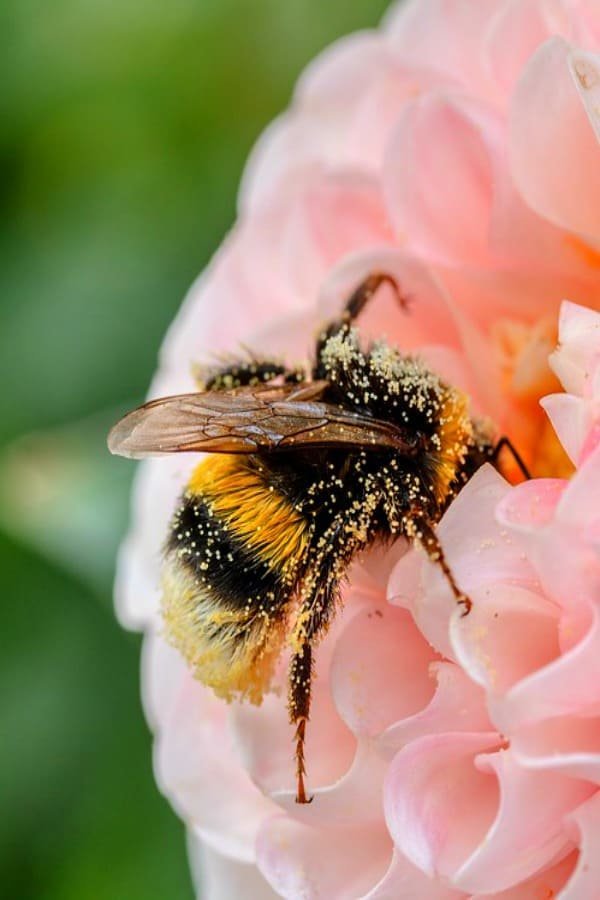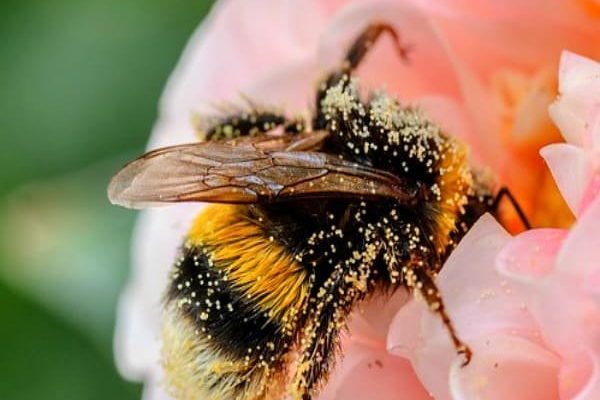
Here’s the thing: attracting bumblebees isn’t as complicated as it might seem. With a little planning and the right plants, you can create an inviting haven for them. You might be wondering what types of flowers work best or how to create an environment that meets their needs. Let’s dive into the world of bumblebees and learn how to make your garden their favorite hangout spot!
Understanding Bumblebees: The Garden Allies
Bumblebees are more than just cute insects; they’re incredible pollinators. Known for their distinctive black and yellow stripes, these creatures are friendly and non-aggressive. Unlike honeybees, bumblebees are larger and generally fluffier, which makes them quite endearing. They play a huge role in pollinating fruit and vegetable crops, helping them grow better and faster.
You might not realize it, but every time a bumblebee visits a flower, it’s collecting nectar and pollen, which provides food for the colony. This means that attracting them isn’t just about beautifying your garden—it’s about creating a thriving ecosystem that supports both plants and wildlife. With their impressive ability to pollinate, bumblebees are crucial for producing foods like tomatoes, peppers, and berries.
Choosing the Right Flowers
If you want to attract bumblebees, start with flowers that they absolutely love. Opt for native plants, as these are naturally adapted to your local environment and tend to provide the best resources for local pollinators. Here are some great options:
- Lavender: This fragrant flower not only smells delightful, but it also draws in bumblebees with its abundant nectar.
- Sunflowers: These towering beauties are like beacons for bumblebees. Their large heads offer plenty of pollen.
- Foxglove: With its beautiful, tubular flowers, foxglove is especially appealing to these bugs.
- Black-Eyed Susans: Known for their bold yellow petals, these flowers provide a rich source of pollen.
Mixing these flowers with a variety of shapes, sizes, and colors can make your garden not only bee-friendly but also visually stunning. Plant in clusters for the best chance of attracting bumblebees, as they prefer to forage in patches rather than singles.
Creating a Bee-Friendly Habitat
Just like us, bumblebees need a good living environment. To create a bumblebee paradise in your garden, consider these key elements:
1. Native Plants: Aside from flowers, include shrubs and trees that native bees are familiar with. They rely on these plants for food and nesting sites.
2. Shelter: Bumblebees often nest in the ground or in undisturbed areas, like piles of leaves or brush. Consider leaving some areas a bit wild instead of perfectly manicured.
3. Water Sources: Just like you enjoy a refreshing drink, bumblebees need water, too. Providing shallow dishes with pebbles can give them a safe drinking place without the risk of drowning.
Creating a habitat that meets these needs helps bumblebees thrive and encourages them to stick around longer. After all, a happy bee is a busy bee!
Avoiding Pesticides: A Critical Choice
Pesticides can be detrimental to bumblebee populations. These chemicals don’t just target unwanted pests; they can harm beneficial insects, too. If you’re serious about attracting bumblebees, it’s essential to steer clear of using harmful pesticides in your garden.
Instead, consider using natural pest control methods. Introducing beneficial insects like ladybugs can help manage pests without the negative effects of chemicals. If you notice a pest problem, try handpicking the culprits or using organic options like neem oil. Keeping your garden chemical-free creates a safer environment for both bumblebees and other wildlife.
Providing Nesting Sites for Bumblebees
Attracting bumblebees to your garden involves more than just offering food; you also need to provide cozy nesting spots. Bumblebees prefer to nest in undisturbed places, often below ground or in dense grass. You can encourage them to settle in your garden by including:
- Compost Piles: An undisturbed compost heap can be a great nesting site. Just remember not to keep it too tidy!
- Brush Piles: Leaving small brush piles offers not just shelter but also a place for bees to find materials for their nests.
- Wooden Bee Hotels: You can make or buy bee hotels for solitary bees. While bumblebees don’t use these as their primary homes, they do frequent them.
Giving bumblebees a place to nest increases the chances of them returning to your garden year after year.
Creating Seasonal Variety
Bumblebees are active from spring to fall, so having a garden that blooms in different seasons is crucial. If you want to attract bumblebees, consider planting flowers that bloom at various times throughout the year.
In early spring, plants like crocus and snowdrops provide one of the first food sources after winter. As spring progresses, add more flowers like daisies and honeysuckle. In summer, consider sunflowers and echinacea. Finally, asters and goldenrod can keep the food supply going into late fall. This variety ensures that bumblebees have a constant, reliable food source throughout their active months.
Patience and Observation
After putting in all this effort, you might be eager to see results. Here’s the thing: attracting bumblebees takes time. Sometimes, it takes a season or two for them to discover your garden. Be patient and spend time observing your garden.
You might be surprised to find that different bee species visit at various times. Keep a journal to note what flowers they’re attracted to or the times of day they’re most active. This information can help you adjust your gardening approach over time to create an even more inviting space for these beneficial little creatures.
In summary, attracting bumblebees to your garden is a rewarding endeavor. By selecting the right plants, creating a welcoming habitat, and avoiding harmful pesticides, you can encourage these essential pollinators to become regular visitors. Remember that a little patience goes a long way in cultivating a bee-friendly space that not only benefits your garden but also contributes to a healthier environment. So, grab your gardening gloves, and let’s get those bumblebees buzzing in your backyard!

